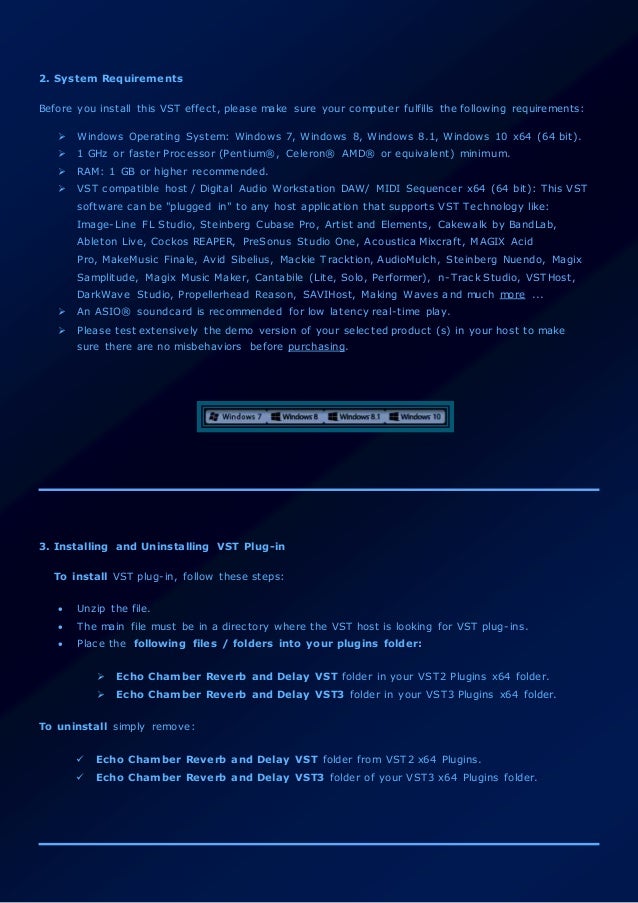List Of Stock Cubase Pro 10 Vst Effects Plugins
- List Of Stock Cubase Pro 10 Vst Effects Plugins Pro
- List Of Stock Cubase Pro 10 Vst Effects Plugins Plugin
Everything tagged Cubase Pro, including VST Plugins, Audio Units, AAX Plugins, Soundware, Sample Packs, Patches and Presets. Since there are so many VST plugins out there, it can be overwhelming to choose from the multitude of great plugins. We’ve done the research for you; this list provides you with reviews of the 30 best VST plugins to have in your arsenal in 2020. Here are the best VST plugins 2020: 1. FabFilter Pro-Q 3. /jazz-drum-kit-vst-free.html. Smart flexibility for all your EQing needs. This DVD is the ultimate cutting edge suite of over 1700 professional cubase VST and VSTi plugins, audio DJ effects and loops as well as a VST compatible music recording software. VST Platinum comes jam packed (over 4.7 gigs) with thousands of incredible sounds, vst synths and world class effects to take your music to the next level.
Helm is a cross-platform, polyphonic synthesizer which runs both as a standalone synthesizer or as an LV2, VST, VST3 or AU plugin. It comes in both 32-bit and 64-bit versions. This plugin is open source which means that you can modify it and even redistribute your modified versions. 2) Steinberg VariAudio — Cubase Pro (Paid) Steinberg’s VariAudio is a pitch correction software included in Cubase Pro. It’s not a standalone plugin, so you won’t be able to use it if you don’t own Cubase Pro. But, for those of you with Cubase who didn’t realize your DAW has pitch correction, rejoice! VST plug-ins encompass a wealth of instruments and effects, many of which are attempts to replicate hardware instruments and signal processors. They are typically used in DAWs such as Logic, Ableton Live, Studio One, and of course in Cubase, which is Steinberg’s flagship DAW. Unlike other free VST plugins in our list, Sound Recovery is specifically tailored to repair low-quality audio tracks to make them sound better and reach the professional level. The plugin will help you adjust mid & high frequencies to an optimal level or add them if they’re missing in a soundtrack.
1. Drag And Drop In MixConsole
Most people know how to add insert effects to a mixer channel in MixConsole. But did you know that you can pick any effect up from its slot and drag it to any other slot? Or, hold down the alt key while dragging to duplicate the effect to a new slot on any channel. The clever part about this second method is that it copies all the parameters of the effect, not just the effect itself. So let’s say you have spent ages getting a vocal compression set up just right. You could save it as a preset, but you can also quickly duplicate the instace to another channel, taking the setting with you as you go.
2. Use Cubase’s Powerful Track Presets
From any insert section either in MixConsole or the Track Inspector for a channel, you can click at the top of the FX list to choose to save (or indeed load) a Track Preset. This is a file that contains data about the plug-ins loaded as well as all their respective settings. In the Save window you actually get a bunch of options that go well beyond simple preset naming. You can add attributes, tags and even create folders to group presets together. Over time this is a good way to build your own library of FX chains for specific purposes, and achieve a signature sound.
3. The Plug-In Manager
In the Devices menu you will find access to Cubase’s Plug-In Manager, a comprehensive tool for staying on top of your plug-in collection. As well as being able to specify custom VST folder locations you can see which plugs are active, which are in use, blacklisted as problematic and sort the list by type, name, compatibility and so on. From here you can manually deactivate a plug without physically deleting it, and in the Collections list on the right hand side you can create custom folders, perhaps grouping by type, manufacturer or other characteristics. It’s a great way to manage plugs without delving into system-level folders.
4. The VSTi Window
Click on the Show Right Zone button at the top right corner of the Project window to reveal the VST Instrument section. This is a much quicker way of loading and assigning instruments than doing on a per-channel basis. You can search your library and load multiple instruments, assign tracks and MIDI channels to them, use quick controls, open full GUIs and even freeze tracks from here. It’s a powerful tool for managing your virtual instruments inside Cubase.

5. Plug-In Information
Free vst documents. Also in the Devices menu can be found a Plug-In Information option. When opened, this provides a simple overview of all the different plugs, codecs and system extensions that Cubase has access to. You can disable or enable these using their checkboxes in cases of troubleshooting, though for the most part you will probably want to leave the system-level stuff alone: there’s a reason it’s there.
